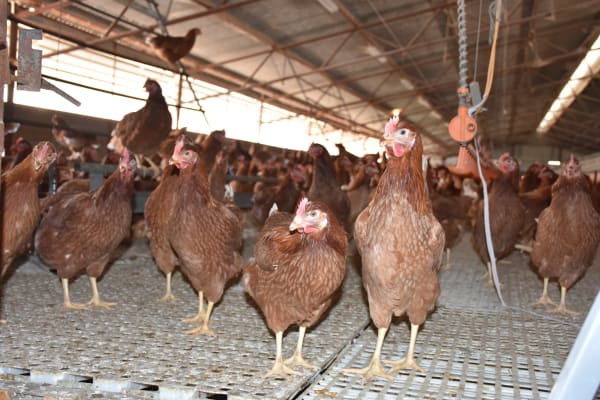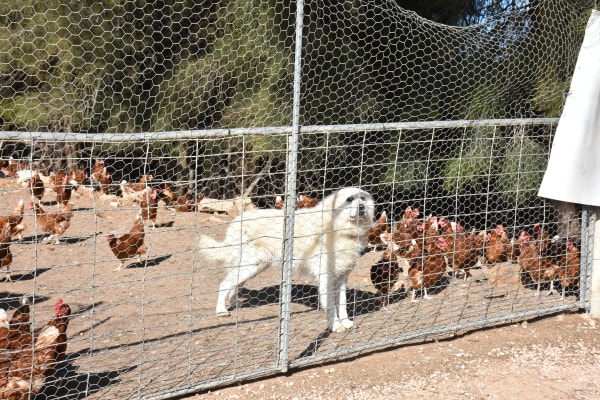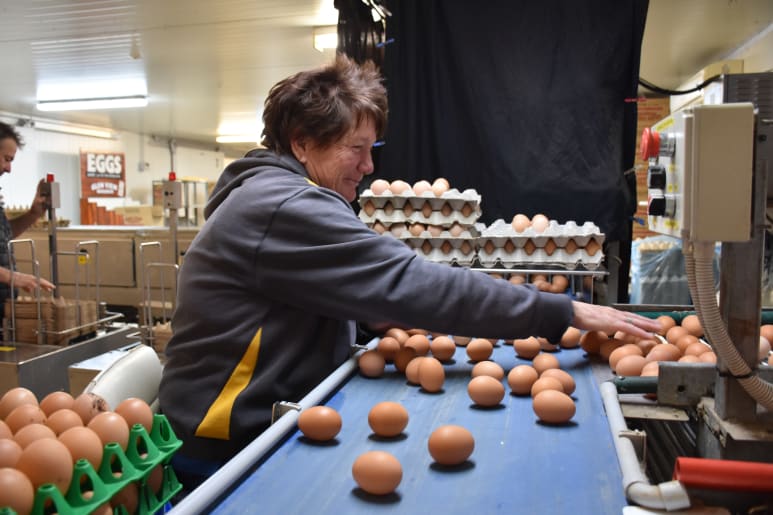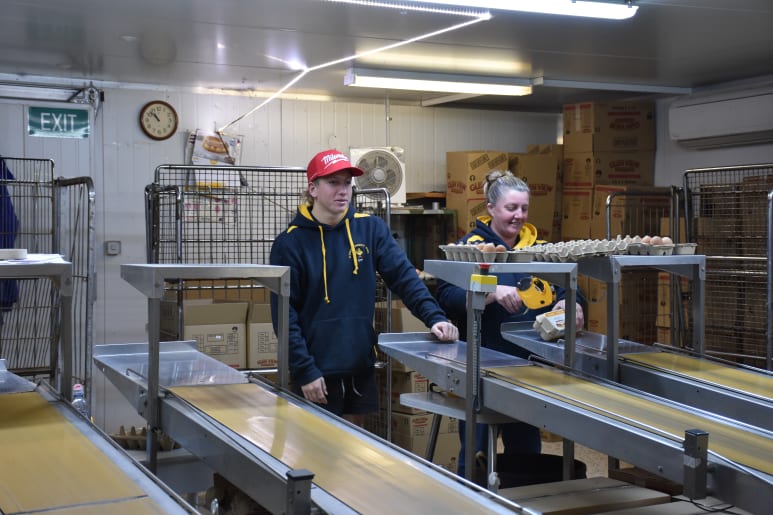GLENVIEW Poultry Farm, based in the Riverland’s Pike River, is a family-owned and operated farm, home to both free range and caged chickens.
Darren ‘Chook’ Letton was born into the poultry and egg business, with his parents setting up what is now known as Glenview almost 60 years ago.
“My mum came from Wynarka down in the Mallee,” Darren said.
“There were a lot of farmers who had free range set-ups and they would all send their eggs off to the co-operative, the SA Egg Board. When her and my dad got together, he built one of the old sheds here and that was a hobby.
“He was a wool presser and a shearer – he’d go off in the week, working, and the chickens were something that kept Mum busy. It just grew from there, and they became so busy that Dad came back to work full time on the egg farm.”
By about 1966, the farm was home to three of the old sheds full of chickens, and in the early 70s they built the first cage shed.
“Cage sheds were a normal, efficient way of producing eggs back then because you could feed and maintain them easily, but that was a simple set up – you hand-collected the eggs still,” Darren said.
“We operated like that until the mid-80s before bringing them in as point-of-lay. Each shed would hold 4000 chickens and they had 12,000 cage chickens at the time.”

In 2007, Darren took over the family business.
“I shut the old sheds down for a while but then I converted them because we had 28,000 cage chickens here at one stage – and I was sending all of my surplus to Adelaide,” he said.
With the slow demand for free range we decided to gut the old cage sheds and convert them to free range. That was 2009 and it’s still how we operate now.
“We have four free range sheds now, holding almost 20,000 chickens, and the one cage shed I built in 2008, which runs 16,000 chickens.
“You’re never really at full production, because you can be removing birds to sell, or you have young birds who aren’t laying yet.
“We’d probably produce around 2000-dozen eggs every day on average, which is 24,000 eggs and sometimes we get up to 30,000.”
In 2008, Darren created the Glenview Poultry Farm brand, which he cites as “the best thing I ever did”.
The branded eggs are sold to major supermarkets, including Woolworths, Foodland and IGA in the Riverland, Mallee and Mildura.
“We’re very lucky to have really good support from locals here, like our hotels, cafes, hospitals and butchers," Darren said.
“We pretty much have that local monopoly and we have had for a long time, because we’re a well-known brand.”
Darren juggles his time as a business owner and manager while also being chairperson of the Commercial Egg Farmers of South Australia and Tasmania.
“We used to be part of the South Australian Farmers Federation in a poultry division but it didn’t work out,” he explained.
“We just need to be involved with the industry, and the chair of the group – currently me – has to go and have meetings with directors from other states and just discuss things like the standards and guidelines to control running an egg farm.
Plus, you can learn about disease outbreaks happening overseas so it’s good to have your finger on the pulse.”
The changes made to the Australian Animal Welfare Standards and Guidelines for Poultry earlier this year will see caged eggs phased out over the next 12 years, and Darren said while he has no problem with changing to completely free range, he would like to see compensation from the government.
“If I was to replace the caged shed with free range, I’d have to build four more sheds,” he said.
“I don’t know where I’d put them here, because it’s not a very level site – I don’t even know if I could do it.
“It would cost me $2.5m, and if I do it in 10 years’ time it might be more like $4m.
“We’ve got about 10 years from now, but farmers need a bit more time because of the cost.
While there is still a market for caged eggs, I’ll still produce them – and it’s about choice.
“Some people prefer caged eggs to free range because they feel free range is a bit of a dirty system. A free-range chicken can go outside and scratch, but it could possibly eat some poo. You go outside to watch the birds, and if they see something they think looks delicious… they’ll eat it.
“There’re positives to cage systems because you can control the temperature, they get plenty of feed, plenty of water and very little mortality – very little disease.
“In free range, you’re more open to those things because they’re exposed to the elements, bullying, and sickness can spread through the flock quickly.”

Looking at the short-term future of Glenview, Darren said there wouldn’t be anything “too extravagant” happening at the farm over the next 12 months.
“I’ve just spent money on all the other stuff, which has brought our free-range capacity up to 20,000 – I’m above the cage production now,” he said.
“Woolworths and Coles have said no more caged eggs by 2025 and I have no problem selling caged eggs elsewhere, but would I have enough free-range supply to satisfy them?
“I don’t know, it’s all a bit of an unknown thing at the minute.”
When asked the philosophical question of what came first, the chicken or the egg, Darren was steadfast with his answer: the egg.
“It has to be the egg, doesn’t it?” he said.
“Something laid an egg and then the chicken came from it. It was probably some kind of jungle chicken-bird that made it and it’s all breeding… but it has to be the egg.”












